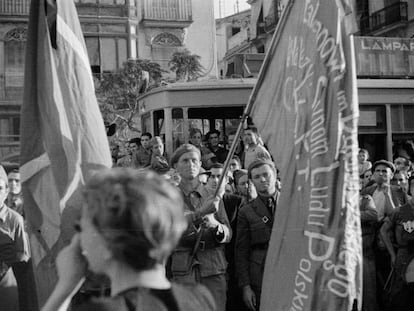Lost archive of Spanish Civil War photos discovered after 72 years
A historian has located more than 500 images taken by the Hungarian photographer Kati Horna between 1937 and 1938, when she was working for the CNT anarchist labor union
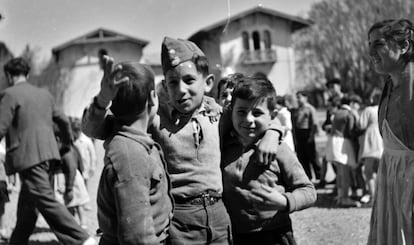
The forgotten legacy of the Hungarian photographer Kati Horna has been unearthed by a Spanish researcher from the archives of the CNT anarchist labor union in 48 wooden boxes. The CNT got the archives out of Barcelona in April 1939 and, after a long journey with stops in Paris and the British cities of Harrogate and Oxford, they arrived safely at the International Institute of Social History (IIHS) in Amsterdam in 1947.
The boxes contain more than 500 negatives of photos taken between 1937 and 1938 by Horna, a Jewish banker’s daughter born in Budapest in 1912, who came to Spain during the Spanish Civil War to offer her services to the CNT anarchists and the Iberian Anarchist Federation (FAI) in their foreign propaganda department. The extraordinary find completes a series that includes 250 negatives now kept in the Documentation Center of Historical Memory in Salamanca, which was sold by Horna to the Spanish state in 1983 for two million pesetas (around €12,000 at today’s rates).
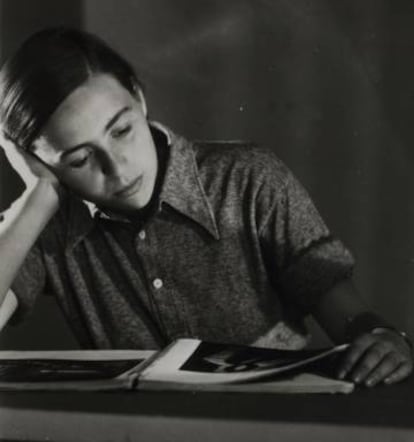
These 250 negatives had been salvaged by Horna and carried into exile in a small tin box. Her journey out of Spain was made in the company of her partner, the artist José Horna, who would be arrested and sent to a concentration camp in France. Once he was freed, the couple fled the Nazi invasion and settled in Mexico, where Horna developed her career as a photographer and surrealist. The whereabouts of the rest of her Civil War photos had remained a mystery until now.
Referring to their precarious journey to Amsterdam, Henk Wals, the director general of IIHS, explains that the photos were not sent directly to the institute because they feared that the Second World War would reach the Netherlands, despite its neutral status – and in fact the Nazis did invade in 1940.
The IIHS was set up in 1936 to protect collections of archives that were considered at risk from the rise of authoritarian regimes in Europe. “The catastrophic end of the Spanish Republic was exactly the kind of situation the founders had in mind,” says Wals.
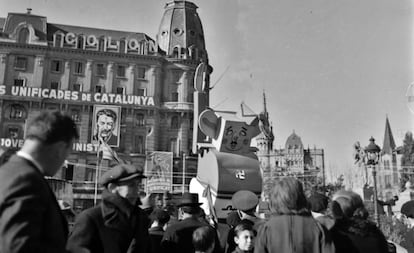
The wooden boxes remained locked in the IIHS for more than three decades until the death of Spanish dictator Francisco Franco in 1975 allowed the CNT to resurface. The boxes were opened and the material organized with published inventories. Only the CNT-FAI Foreign Propaganda Offices’ photo archives remained. These were set aside, pending classification, which didn’t happen until 2016 when the art historian Almudena Rubio, a researcher at the center, started to organize the copies first and then the negatives.
Political militancy
Rubio is still drawing up the photo inventory from the Spanish Civil War – more than 6,000 celluloid negatives and more than 200 glass plates, which have emerged in good condition. A comparison with other stocks of photos associated with the war offer some idea of the scale of the discovery; the archive from the Propaganda Delegation of Madrid in the Culture Ministry has 3,051 images while the famous Mexican suitcase found in 2007 and belonging to Robert Capa, Gerda Taro and David Chim Seymour contained 4,500 negatives.
On the Culture Ministry’s website, it still says: “A large part of Kati Horna’s photographic series from the Civil War is probably scattered or destroyed.”
According to Rubio, the new negatives are complementary to the Salamanca collection rather than repetitive. “Until now, [Kati Horna] was recognized as a photographer and artist but she was taken on by the anarchists in 1937,” says Rubio. “She never worked for the Republic. She worked for the CNT-FAI and you can’t properly understand the photos without taking her political militancy into account.”
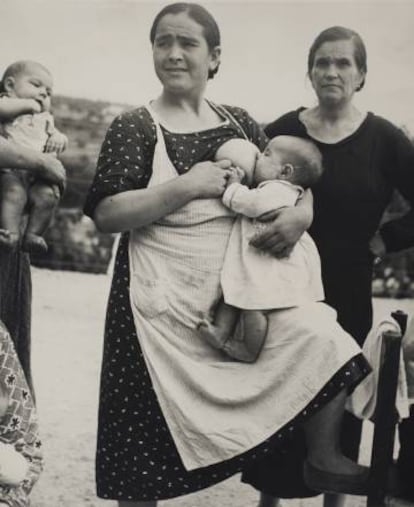
The discovery offers an insight into the years Horna spent in Spain. Horna has been considered a rearguard portrait photographer who also captured the essence of daily life of women, for instance in her iconic photo of a mother breastfeeding her child in Vélez Rubio, Almería.
The breastfeeding photo made the front cover of the 12th edition of the anarchist magazine Umbral and was used to illustrate a report called Maternity under the symbol of the Revolution. Almudena Rubio says that the photo is among the negatives in Salamanca because these types of photo, taken in refugee centers, fitted the requirements of the Umbral publishers.
The new images, on the other hand, do not particularly focus on women’s issues. “She constantly takes portraits of villagers of both sexes and boys and girls. I believe Horna went further – she was seeking the narrative, the story,” says Rubio, who never considered Horna to be a feminist photographer even before stumbling across the new cache of her work. “The negatives in Amsterdam don’t reveal a new Horna, although we have found series [of photos] whose existence we were unaware of until now, such as the funerals of the anarchists, [Camillo] Berneri and [Francisco] Barbieri.”
The recently discovered negatives cover Horna’s stay in Barcelona from her arrival at the age of 24 in January, 1937, until her move to Valencia in July. She was not a professional photographer, although she had received some training. However, she became the official reporter for the anarchists and their Spanish Photo Agency, thanks to a photo that was published in the UK magazine, Weekly Illustrated.
After seven months working for the propaganda office, Horna published Spain? A Book of Images on Stories and Fascist Smears: The Anti-Fascist Propaganda Album. With her Rolleiflex camera, she covered various fronts, including Aragón, Valencia, Xàtiva, Gandia, Silla, Vélez Rubio, Alcázar de San Juan, Barcelona and Madrid. She also took portrait photos of a number of the FAI commanders as well as the famous anarchist Emma Goldman and soldiers from the Ascaso Division stationed close to the Carrascal forest.
“Her work was done in the service of an ideology; a work of propaganda that continued to evolve along with the war,” says Rubio. “She worked day and night. She was a militant photographer, not an artist,” adds the historian. Horna’s photos were also used in response to a smear campaign launched by Franco against his enemies.
Kati Horna’s recently discovered work is imbued with unique dramatic narrative without the immediacy of actual war photos. In contrast to the images taken by Capa, Taro and Seymour – who were on the front line – Horna went in pursuit of a life that ran parallel to that of the trenches, in which death was not at the forefront. She preferred authenticity to news, reflected in her picture of soldiers shaving, and sought a different connection with what she was photographing, preferring a degree of involvement.
Mexico and surrealism
Katalin Deursch, Kati Horna’s real name, never saw her camera as an appendage, but rather as an extension of herself. Her life and her photos were inseparable. Her vision was an integral part of who she was and she was in control of a destiny that took her to the Roma neighborhood of Mexico City where she continued her career until her death, collaborating with a number of publications, as well as exploring surrealism and associating with artists such as Remedios Varo and Leonora Carrington.
Editor José Luis Díaz, who was a close friend during those years, would describe Horna, as “an aristocrat by birth, an anarchist by conviction, a seductress by nature and a vagrant by vocation – a combination that carries an implicit nostalgia for what is lost and surprise for what has been found.”

Together with Horna’s pictures, Rubio has also identified work by the Polish-born photographer Margaret Michaelis, who was also Jewish and worked for the CNT-FAI. “Michaelis’s case is different,” says Rubio. “Her dealings with the CNT-FAI were carried out undercover. Margaret had been living in Barcelona since 1933 and had her own studio. She was well known and formed part of the anarcho-syndicalists and, I believe, they trusted her to accompany Emma Goldman on her visits to the rearguard in Catalonia, Aragón and Valencia in 1936.”
Horna’s daughter Ana María Norah Horna y Fernández is the heir and custodian of her work, which has recently been shown in Mexico City, Paris and New York. These exhibitions along with a biography by Lisa Pelizzon entitled, Kati Horna: Constellations of Sense, have led to a reassessment of Horna.
“The bitter experience of the Spanish Civil War left a profound mark on my mother,” writes her daughter in one exhibition catalogue. “After personally experiencing the insurmountable distance between the theory and practice of war time, my mother maintained a profoundly critical stance toward all kinds of dogmatism.”
Other specialists, however, believe that Horna remained true to her original ideas until the day she died.
English version by Heather Galloway.

